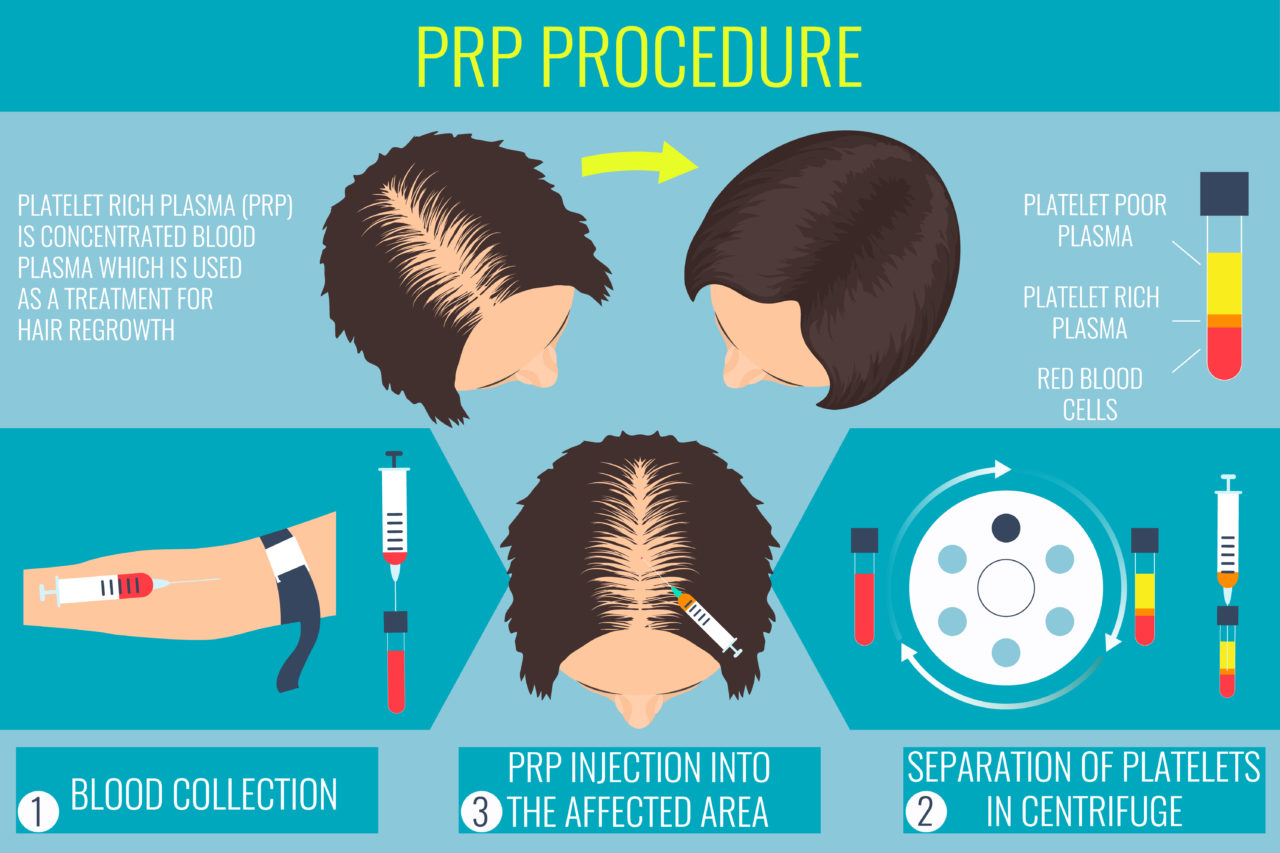Summer Savings!
50% OFF 2 PRP Treatments ($500 value) with the purchase of a hair transplant procedure by August 31, 2024.
Call 516-354-3876 for details.
Is PRP useful for treating hair loss and how does it work?
Platelet-rich plasma (PRP) therapy is a treatment that has been used to promote hair growth in individuals with hair loss. PRP is a concentrated solution of platelets derived from the patient's own blood, which contains growth factors that can stimulate hair follicles and improve hair growth.
Here's how PRP works for hair loss:
- Blood is drawn from the patient and placed in a centrifuge to separate the platelets and other components from the rest of the blood.
- The concentrated PRP is then injected into the scalp in areas where hair loss has occurred.
- The growth factors and other healing properties in the PRP stimulate the hair follicles, promote new hair growth, and improve the overall health and thickness of existing hair.

PRP therapy is generally considered safe, although it can cause some temporary side effects such as swelling, redness, or discomfort at the injection site.
It's important to note that PRP therapy is not a substitute for other hair loss treatments such as medications or hair transplant surgery, but rather may be used in conjunction with these treatments to optimize hair growth and improve overall results.
While research on the effectiveness of PRP for hair loss is ongoing, some studies have shown promising results. PRP may be most effective for individuals with androgenetic alopecia or genetic pattern hair loss and is used routinely by Dr. Mollura as a treatment option for men and woman. It is important to note that PRP is not a cure for hair loss, and multiple treatment sessions may be needed to achieve desired results. Additionally, as with any medical procedure, there are potential risks and side effects associated with PRP, so it is important to consult with an experienced physician to determine if PRP is the right treatment option for you.
